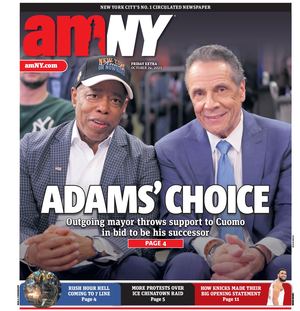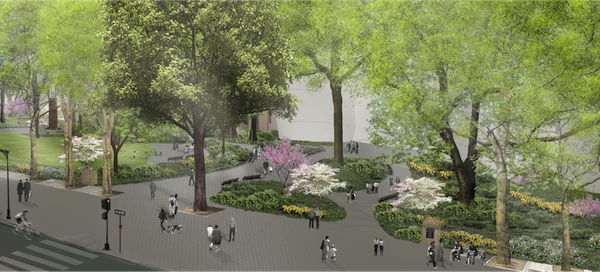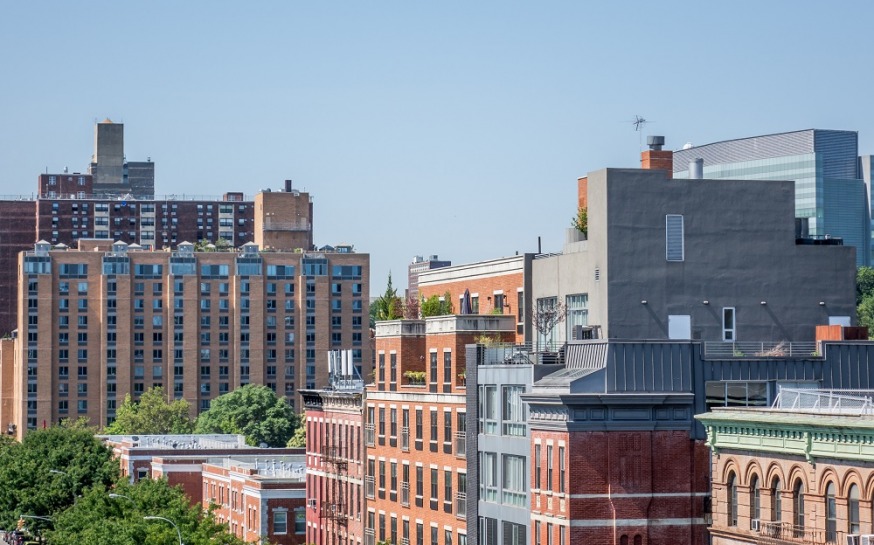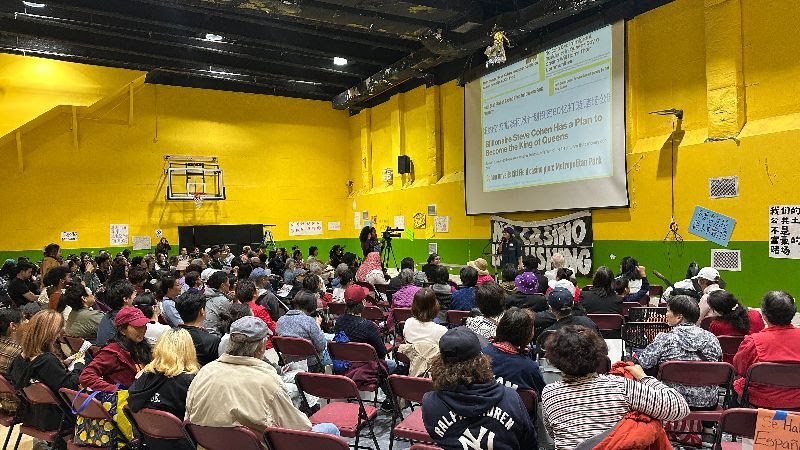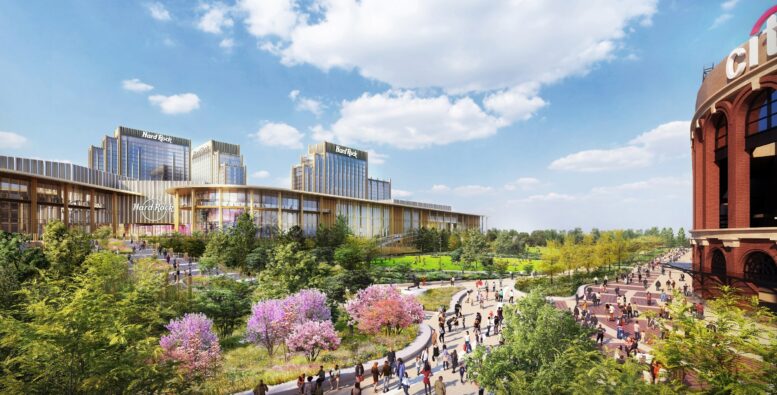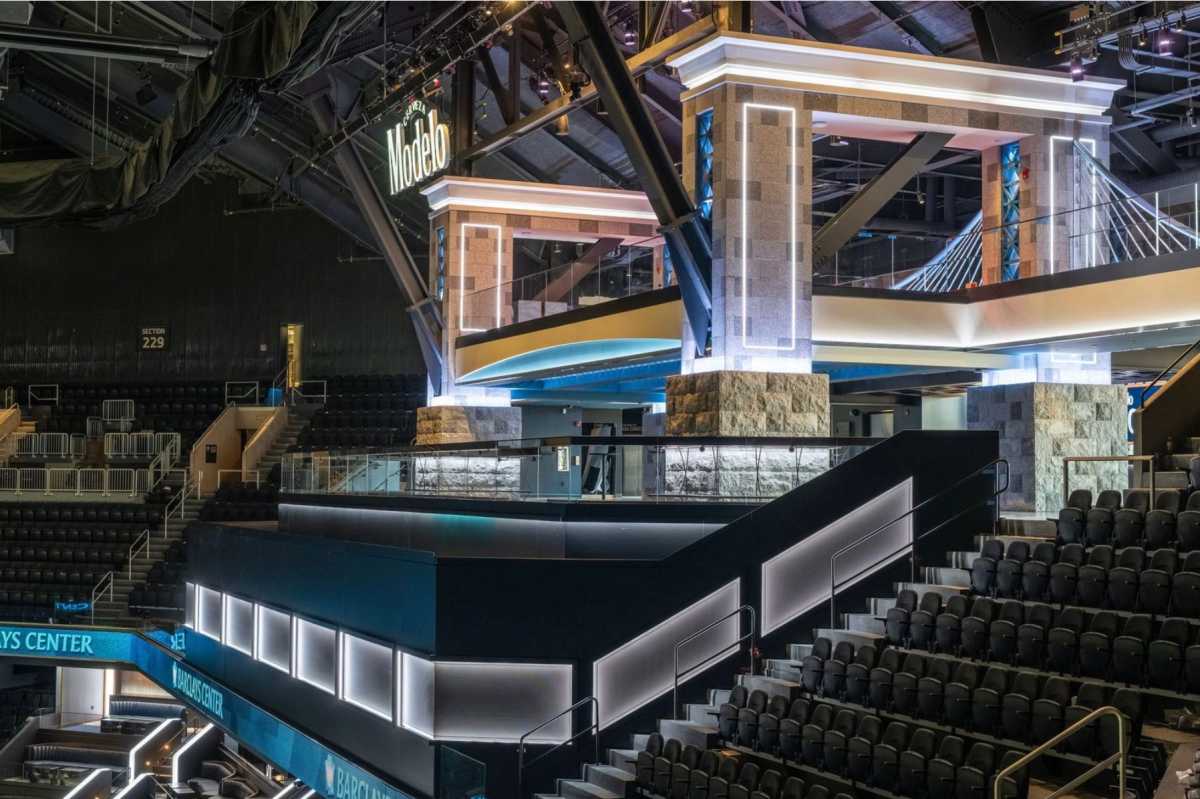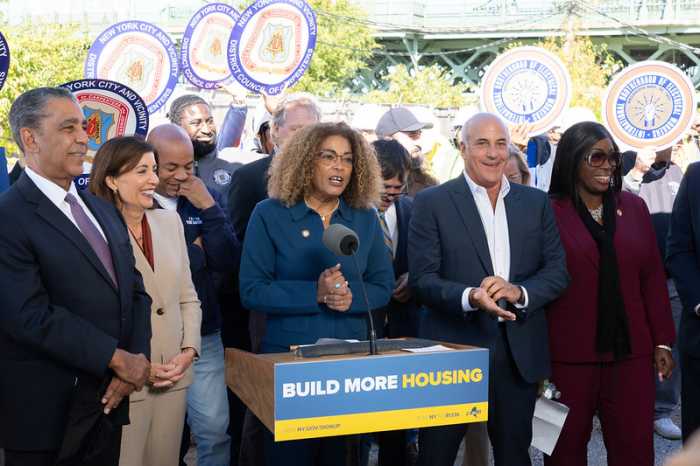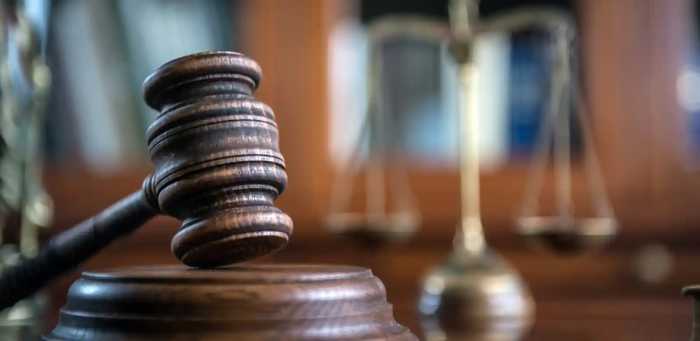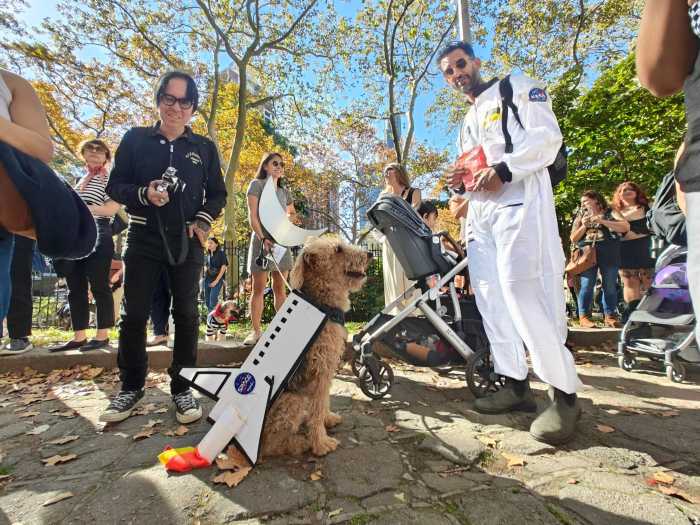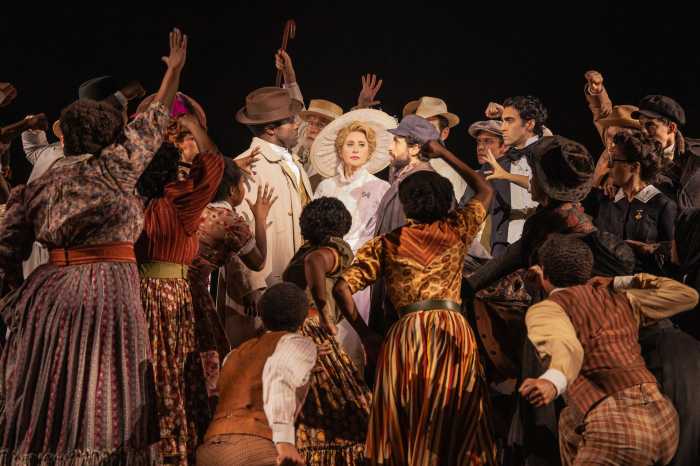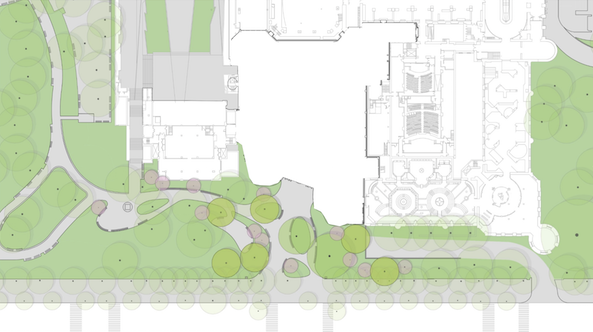
BY JACKSON CHEN | The American Museum of Natural History revealed a proposed redesign of the portion of Theodore Roosevelt Park that would be impacted by the museum’s controversial Richard Gilder Center for Science, Innovation and Education expansion.
After hearing a wide range of concerns and complaints about the new center on the Columbus Avenue side of the museum complex, the museum went back to the community on July 21 with a revised design of the park formulated in consultation with its Park Working Group — one of two advisory panels the museum created in February to invite input on the Gilder Center’s conceptual design.
According to new plans designed by landscape architects at Reed Hilderbrand, the portion of Teddy Roosevelt Park in front of the Gilder Center would include a wider entrance from Columbus Avenue, more quiet areas for locals, their families, and their children, and the preservation of two notable mature trees.
“This Park Working Group was really constituted to help improve the conceptual design,” Dan Slippen, the museum’s vice president of government relations, said. “By listening to the Park Working Group, the landscape architect has been able to improve upon the conceptual design… to be able to give the community the type of areas they currently have in the new design.”
According to Slippen, the block associations and community organizations with representation in the working group had made clear that a bigger entrance, tree preservation, and separation within the park between its users and museum visitors were all desirable elements in any final plan.
Although this second public information session drew a sparser crowd than the museum’s first one, many residents on hand had not retreated from their objections to the Gilder Center.
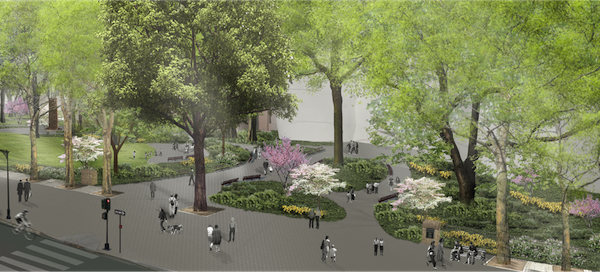
William Raudenbush, an Upper West Sider who has long spoken out against the project, said it was outrageous for the already large footprint of the museum to further encroach upon public park land, and he added that the working groups designated by the museum may not reflect the community’s opinion as a whole.
“We are your neighbors, we would like you to look at us as neighbors,” Raudenbush said to museum administrators. “We think uniting your wings is a noble purpose, but we do not want you to take park land and create a mini Times Square on that side of the park.”
Raudenbush was joined by many neighbors in pleas to reduce the Gilder Center project’s mass. Speakers repeatedly pointed to alternatives like shifting Gilder’s space into current administrative offices within the existing museum footprint or even constructing it at a satellite location.
Steve Anderson, president of the Theodore Roosevelt Park Neighborhood Association, said nobody was arguing against the expansion of science programs for the city. However, the community, he said, feels threatened by the daunting series of public approval meetings that opponents in the neighborhood must bring their concerns before while the museum has lawyers and consultants to represent its interests.
“We’re just the people who live here, we’re the people that care about our community,” Anderson said. “We are less concerned with the miracles in science education inside the museum, but we are deeply concerned about the chaos that we perceive will be happening around the museum.”
The Defenders of Teddy Roosevelt Park, the opposition group that originally led the charge but now has a seat on the museum’s Park Working Group, said the new design is more appropriate than earlier concepts.
“While some parkland would still be lost to the museum’s expansion,” Adrian Smith, the Defenders’ president, said, “we believe the role of the park will be preserved and in some ways improved.”
But the Defenders group wasn’t without concerns about increased vehicular and pedestrian traffic, park access during construction, and, most importantly, the size of the Gilder Center.
“The science center entrance would still be too massive, looming over a small park, without convincing justification,” Smith said. “It certainly is not clear why a solution to the museum’s circulation problem requires such a large edifice.”
The Gilder Center, estimated to cost $325 million, has an expected construction start date in 2017, with three years of construction allowing for an opening in 2020. The expansion project is still under review by the Department of Parks and Recreation, but the museum is preparing its application to the Landmarks Preservation Commission. According to the museum’s schedule, the landmark application process will be the subject of the next informational session on September 13.
